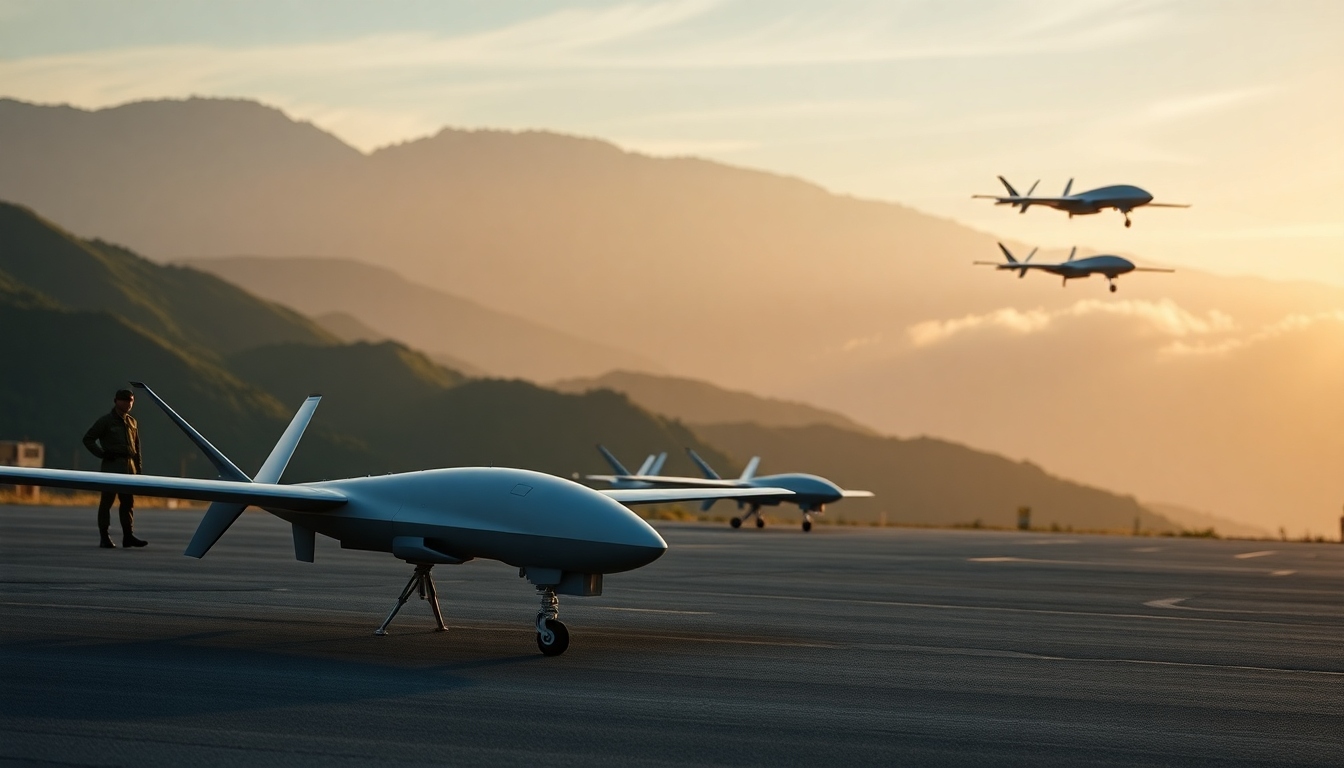Table of Contents
In today’s fast-changing world of global defense, Taiwan is stepping up its game by investing heavily in a strong domestic drone industry. Why? Because the growing threat from China has made it clear that Taiwan needs to be ready.
The strategic move to integrate unmanned aerial vehicles (UAVs) into Taiwan’s defense strategy marks a significant shift towards asymmetric warfare. The goal is to make any potential invasion attempt by China not just difficult, but truly costly.
A Closer Look at the Market and Its Importance
The recent drone expo at Su’ao Bay was a testament to Taiwan’s determination to boost its maritime defense capabilities. Among the stars of the show were three impressive drones: the stealthy Carbon Voyager 1, the speedy Black Tide I, and the explosive-laden Sea Shark 800.
These innovations highlight just how serious Taiwan is about evolving its defense strategy. With its geographical closeness to China, the significance of these advancements can’t be overstated. The Taiwan Strait, with its tricky waters and rugged coastline, poses a tough challenge for any traditional amphibious assault, but the advancements in Chinese military tech are a constant concern.
In light of this reality, the Taiwanese government is launching a “Drone National Team” initiative. This program aims to nurture a local drone industry capable of producing military-grade UAVs and dual-use drones for both commercial and military purposes.
The idea isn’t just to keep pace with China’s drone capabilities; it’s about innovating in ways that take advantage of Taiwan’s unique terrain and tech know-how.
Exploring Investment Opportunities and Challenges
Taiwan’s drone strategy opens up a broader economic landscape, particularly for startups and established tech companies alike.
Already a powerhouse in semiconductor manufacturing thanks to firms like TSMC, which produces a huge chunk of the world’s advanced chips, Taiwan is well-positioned to transition into drone manufacturing. Yet, local manufacturers will need to contend with fierce competition from Chinese firms, especially regarding pricing and market access.
The ongoing war in Ukraine has underscored the strategic role of drones in modern conflicts and has influenced how Taiwan views its defense needs. The Ministry of National Defence has ambitious goals for domestic production, aiming to crank out 15,000 dual-use drones each month by 2028. However, experts warn that these targets might not be enough given the scale of potential conflict. A focus on rapid production alongside innovative design will be crucial, allowing Taiwan’s drone forces to engage effectively over extended periods.
Looking Ahead: Future Projections and Strategic Recommendations
As Taiwan approaches 2027—a year when military experts believe China could feasibly launch a full-scale invasion—the urgency to develop a comprehensive drone strategy is becoming more pressing. While current procurement plans are ambitious, they may not meet the demands of modern warfare. Analysts are urging Taiwan to rethink its strategy, not just in terms of numbers but also in operational planning and deployment tactics.
Experts advocate for a more nuanced approach to drone usage, emphasizing the need to integrate UAVs into asymmetric warfare frameworks. This means not only focusing on reconnaissance and combat missions but also using Taiwan’s geographic features for guerrilla-style tactics. Ultimately, for Taiwan to succeed in its drone strategy, it needs to adopt a holistic view of its military operations, balancing rapid technological advancements with practical applications on the battlefield. What do you think? Is Taiwan’s approach to drone warfare enough to match the potential threat from China?





